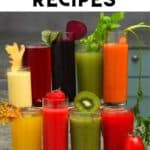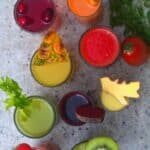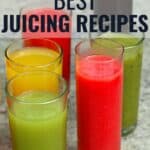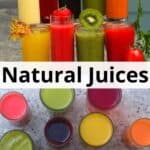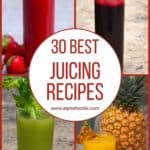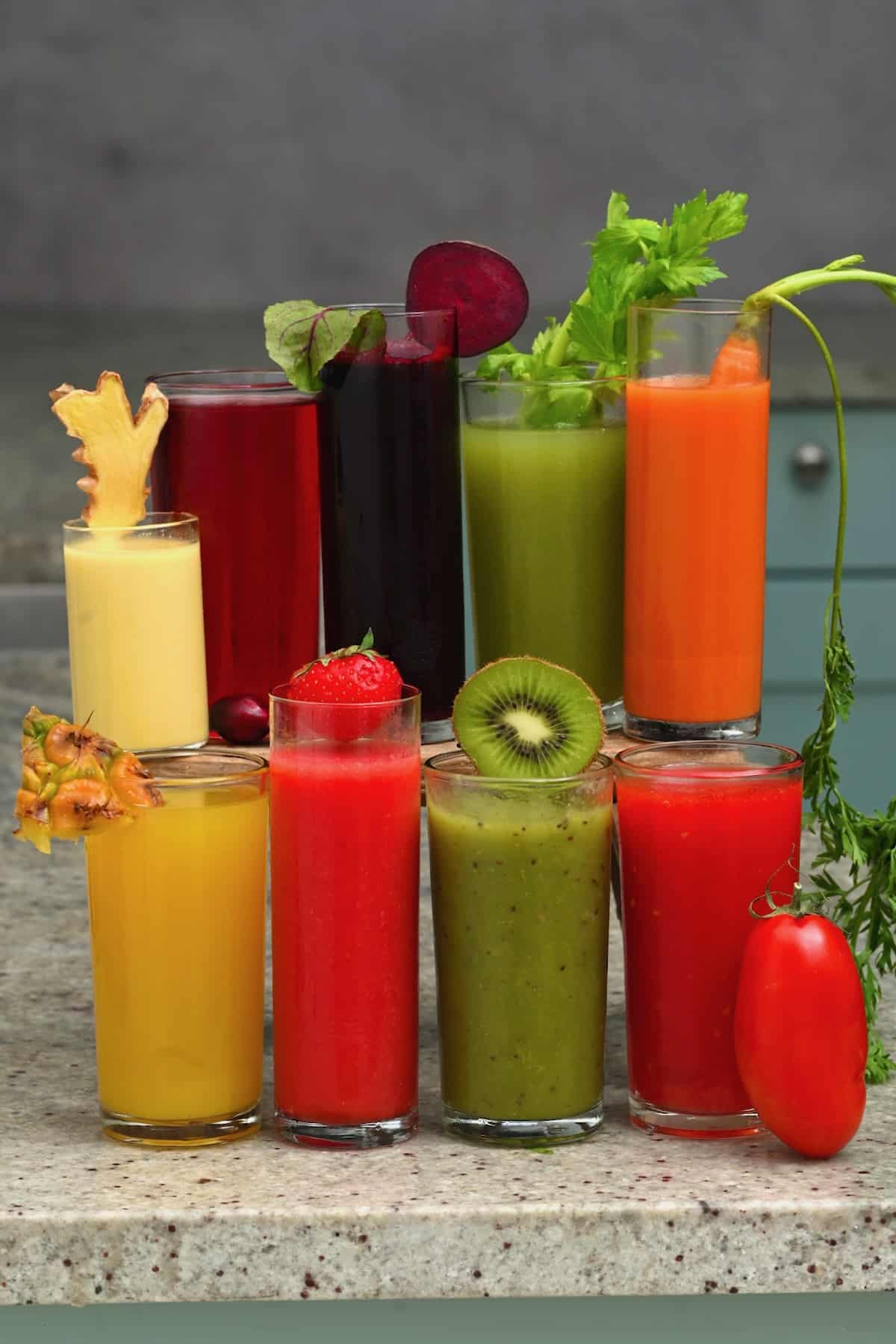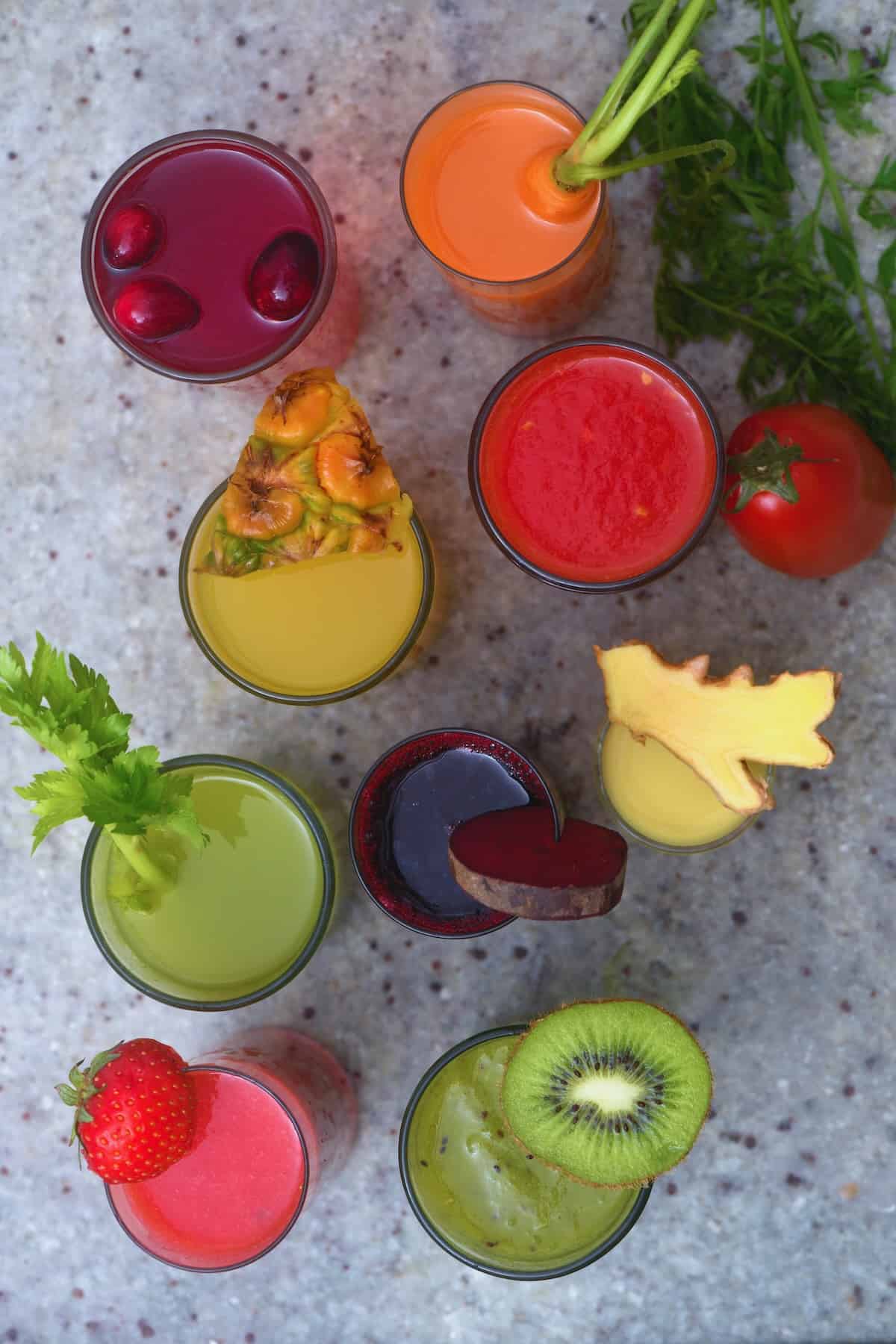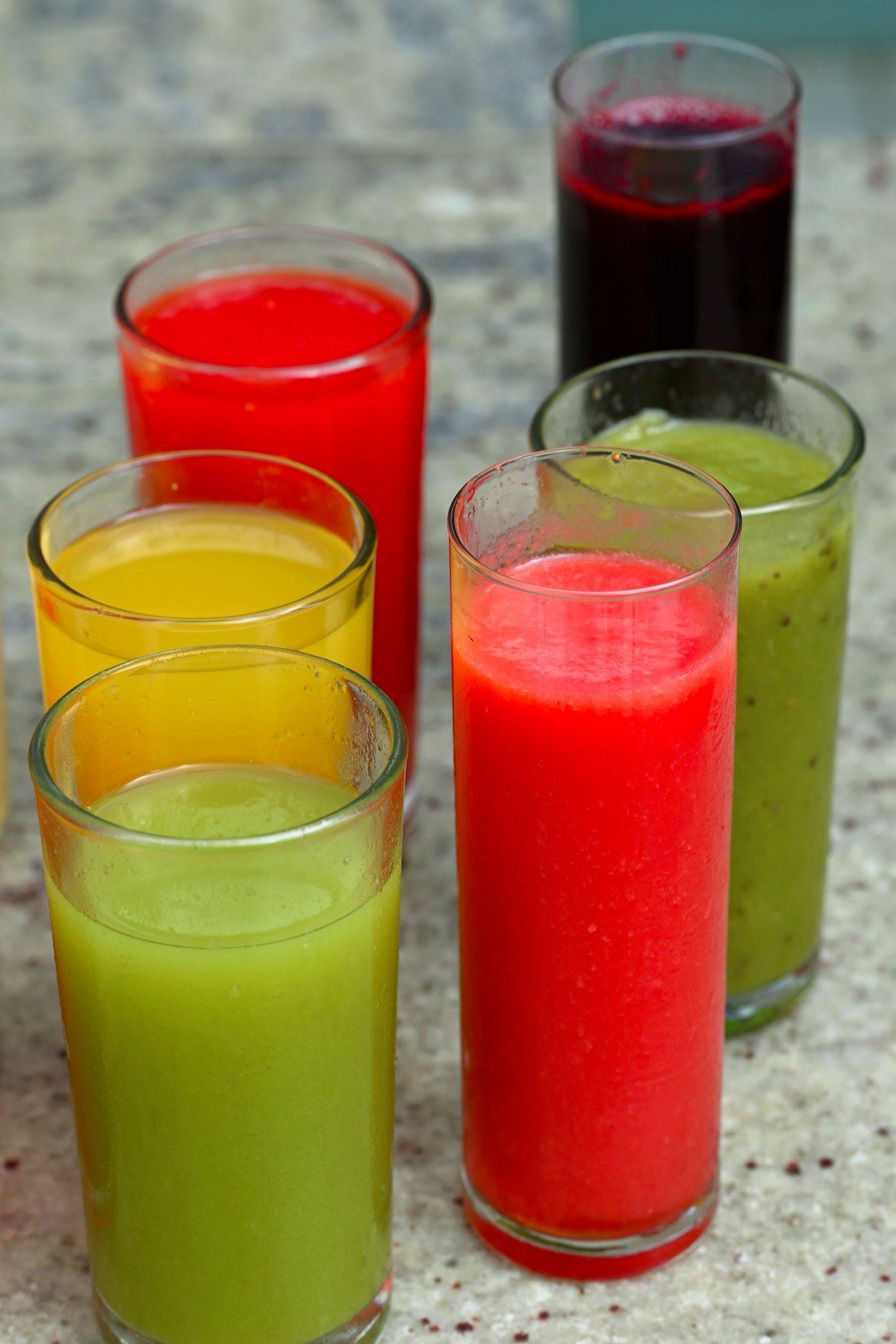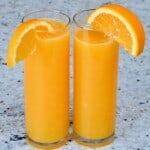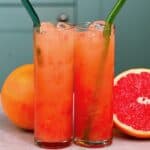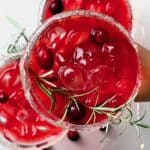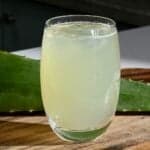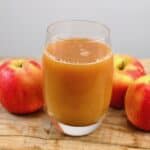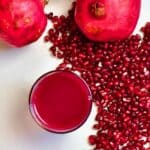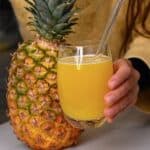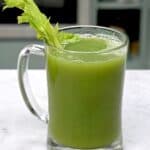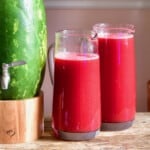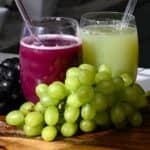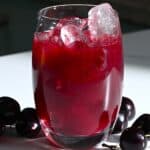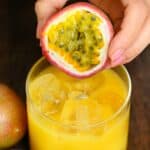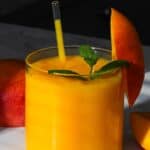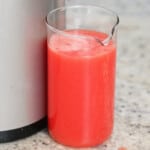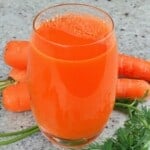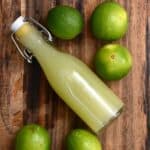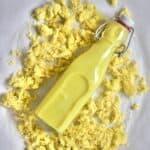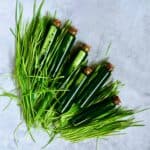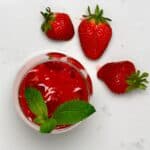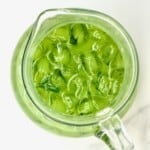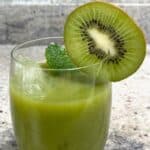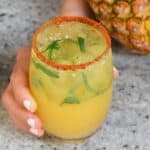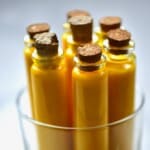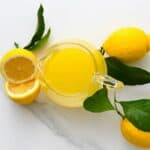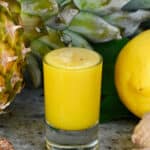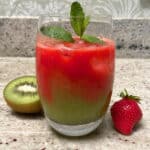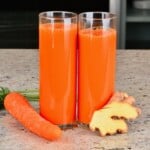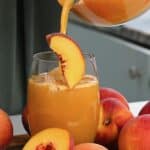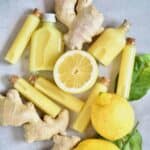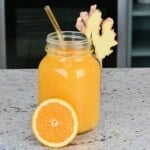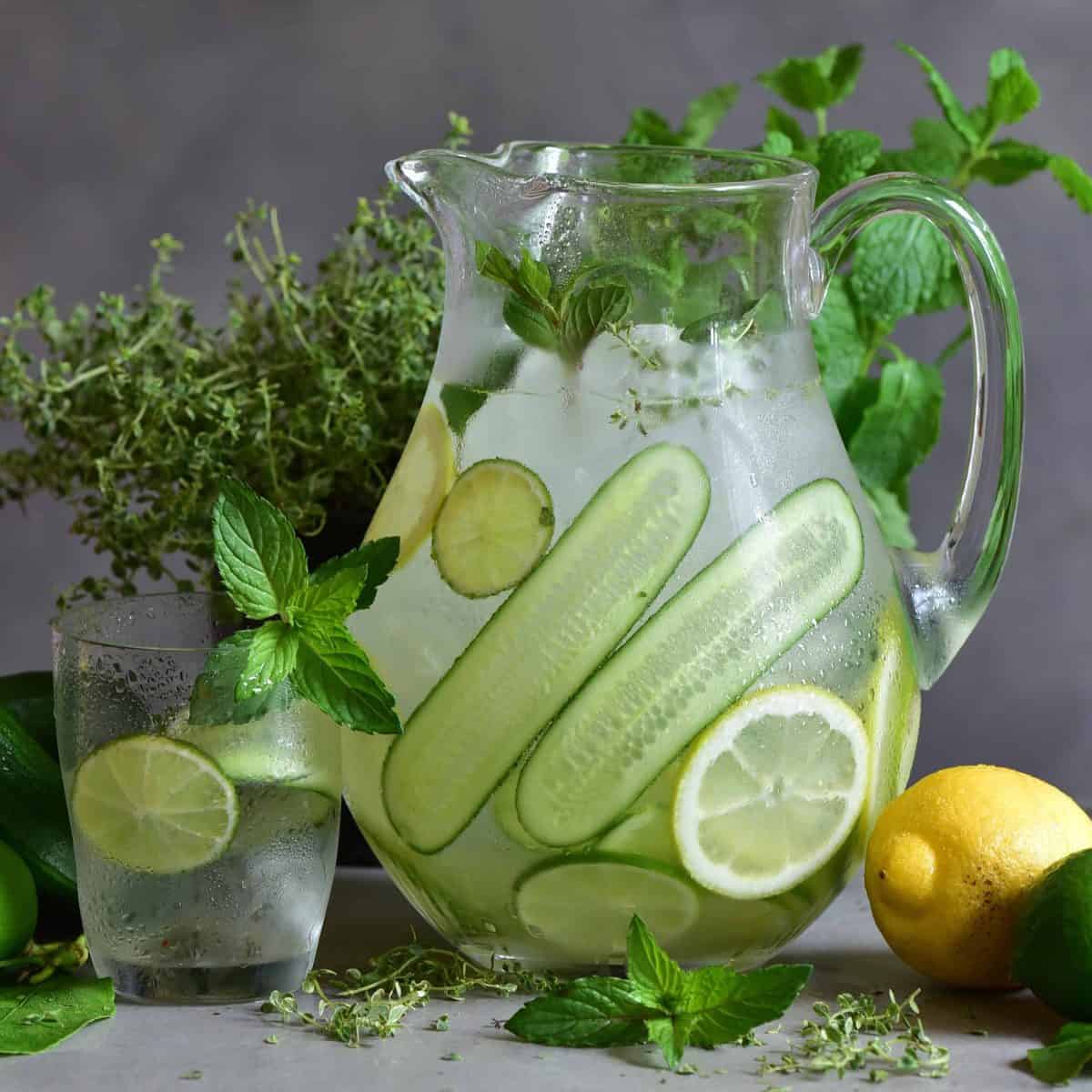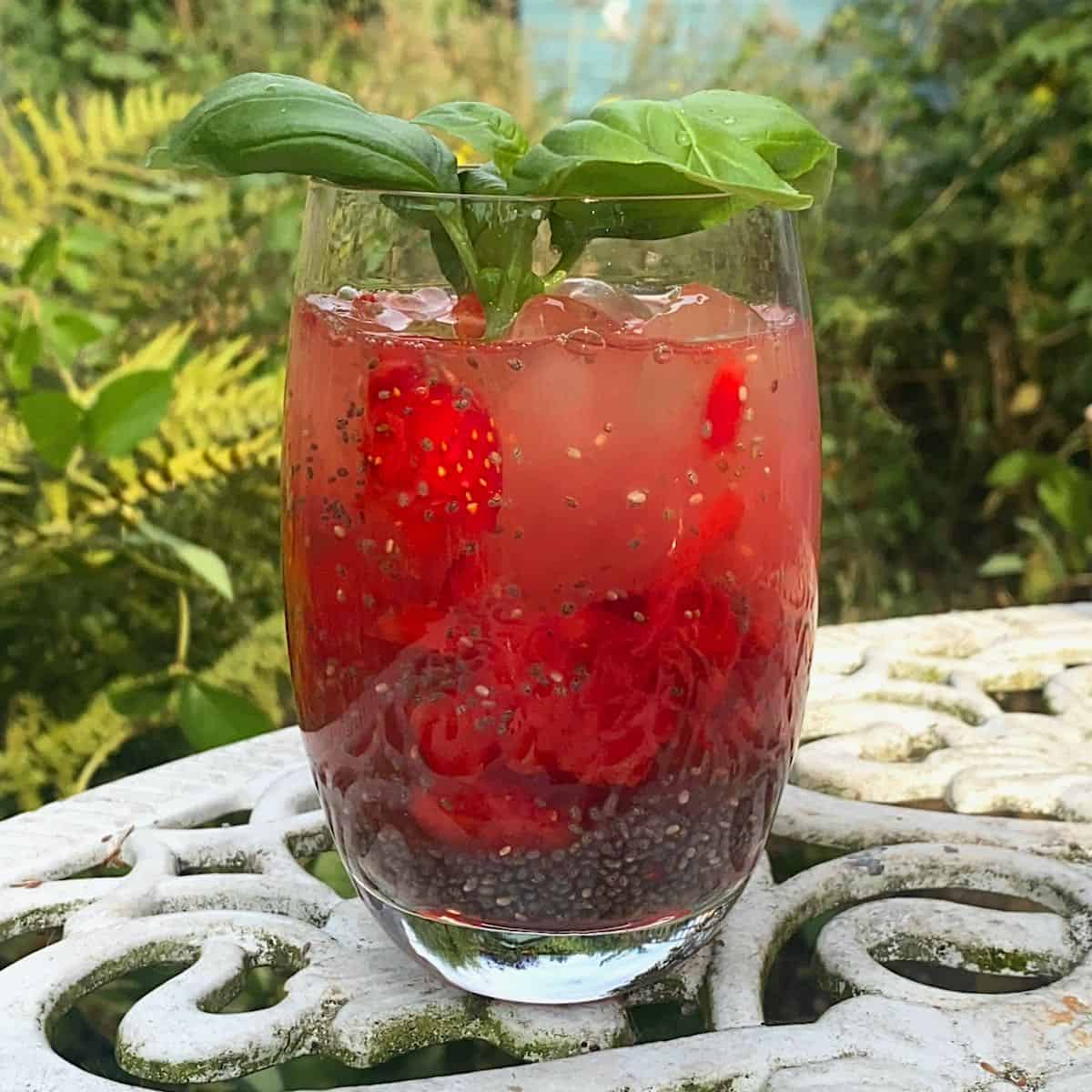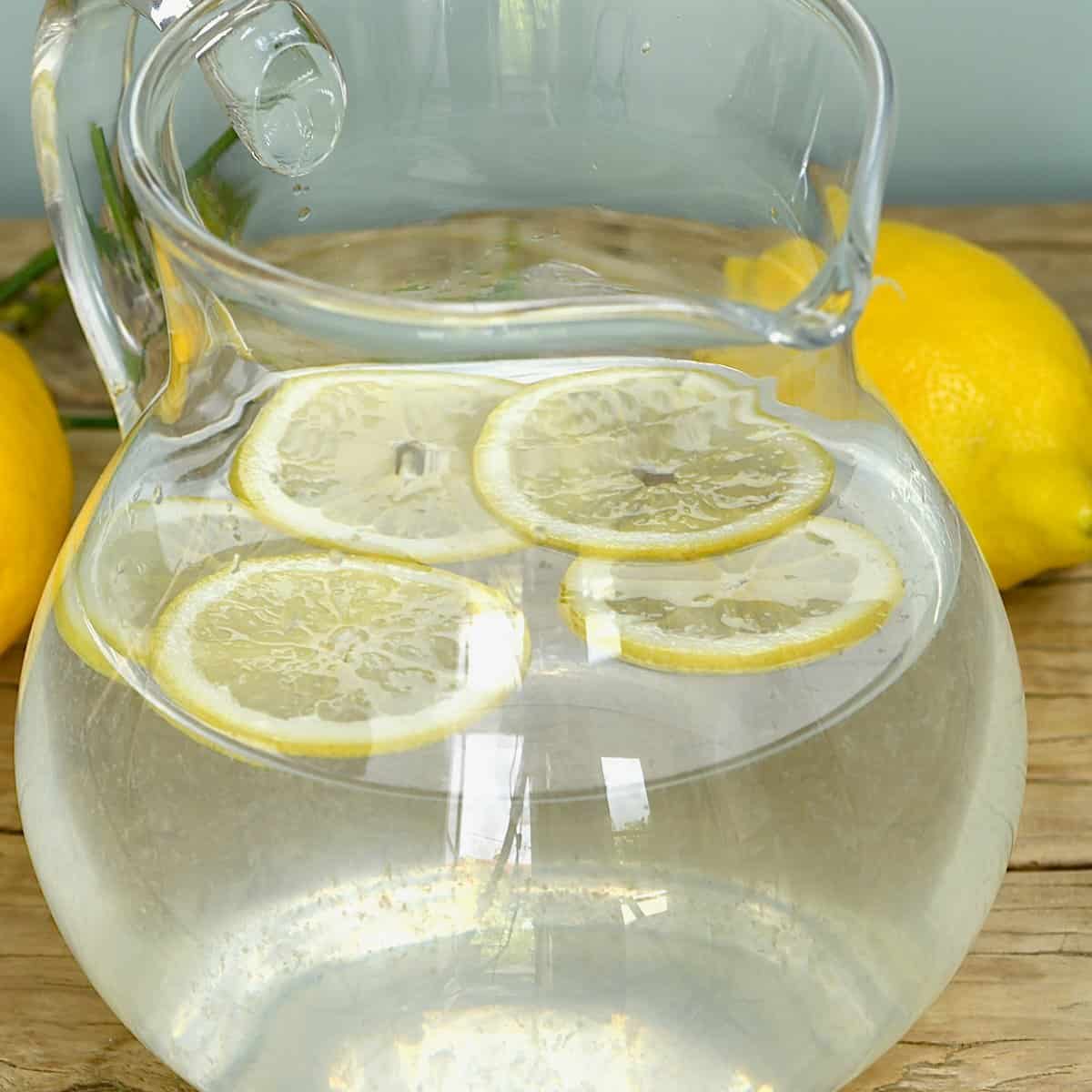Fresh juice tastes great. Plus, when learning how to juice at home, you can be 100% in control of the ingredients. Make the most of certain nutrients, use less or no sugar, focus on energy-boosting or immune-boosting ingredients specifically, etc. Even better, you can make many of the healthy juice recipes below with or without a juicer!
How to Choose the Right Type of Juicer
Four main types of juicers are available to make fresh juice at home. The best juicer for you usually comes down to budget, space, and how often you juice.
Centrifugal juicers: These use little teeth on a high-speed spinning basket to grind the ingredients into a pulp, while the high-speed spinning separates the juice from the solids. These machines juice fast, take up minimal space, clean fairly easily, and are the most cost-effective. The speed and spinning, however, can lead to slightly lower quality juice that’s more oxidized (plus more foam). They also don’t juice leafy greens and softer fruits/veggies well and are fairly loud. Cold-press juicers (aka masticating juicers): These juicers use force to crush the ingredients and extract the juice through a sharp screen (not a press, regardless of the name). This process is slower but will retain slightly more nutrients and extract more juice than centrifugal ones. They can also juice greens like spinach/kale and wheatgrass easier. They are, however, more expensive, bulkier, and harder to clean and the juice is still fairly foamy. For many years, I’ve happily been using a juicer like this. Twin gear juicers (aka triturating juicers): These use two gears that spin and pull the produce, extracting the juice by pushing the pulp through a screen. This method extracts more nutrients than the above two. Also, this machine is quiet and can make various other DIYs like nut butter and baby food. But it is slow, bulky, and fairly expensive, and the juice will contain higher amounts of pulp. Juice press: This is the best type of juicer you can buy. It grins the produce into a pulp, then slowly extracts the juice with a press that uses thousands of lbs. of pressure. This machine extracts the most juice (leaving less than 1% pulp) and nutrients and creates little foam and oxidization. It also creates the longest shelf life juice and easily juices leafy greens and soft fruit. However, it’s also the most expensive and primarily used commercially.
The Benefits of Juicing
Increased vitamins and minerals in your diet: My favorite juicing health benefit is how it allows you to consume large quantities of health-boosting ingredients in one go. It’s far easier to drink a glass of juice than eat multiple fruits and vegetables in one sitting. Juicing can also encourage you to consume fruits & veggies you otherwise wouldn’t. Quicker nutrient absorption: Even better than the above, home juicing (especially on an empty stomach) makes it easier for your body to absorb the nutrients quickly. It also gives your digestive system a rest from digesting fiber. Perfect for an immediate morning or afternoon pick-me-up. Can help cleanse your body: Though this depends on the ingredients, juice cleanse recipes are a great way to consume a concentrated amount of detoxifying, anti-inflammatory, antioxidant-rich ingredients. An excellent alternative to soda: Ditch empty calories in high sugary soda and choose nutrient-rich, low-calorie juice instead (which can also help with weight loss).
The Pitfalls
Even though I’m a fan of consuming fresh juice regularly to supplement my diet, it’s also worth mentioning the potential pitfalls of juicing. First, be careful of the ingredients you’re using. Lots of fruit means lots of (albeit natural) sugar. In addition, certain ingredients (like ginger, broccoli, and turmeric) can cause stomach upset when over-consumed. Likewise, I consider a healthy diet to contain plenty of fiber (whereas juicing eliminates most fiber). So either use the leftover juice pulp or eat plenty of fiber in other areas of your diet.
What Are the Best Fruits and Vegetables for Juicing
Most fruits and veggies are juicer recipes friendly. However, the type of juicer machine you have might be more suited for harder veggies and have issues with softer ingredients like leafy greens (spinach, kale, wheatgrass, etc.). Some of my favorite fruits and vegetables to juice include apples, beets, carrots, cucumber, citrus fruits, celery, sweet potatoes, and bell peppers. I also love adding leafy greens to my juice recipes once or twice a week. They shouldn’t be consumed in large amounts. Aromatic roots and fresh herbs (like ginger, mint, parsley, etc.) add more flavor.
What Fruits and Vegetables You Should Not Juice
There are several things you definitely shouldn’t juice. Usually, these are low on moisture or particularly hard/soft. These include bananas (too soft and not enough juice), figs (wrong consistency), rhubarb (too fibrous), avocado (not enough juice), and coconut (too hard/tough, though I made coconut cream using a juicer). All of these are better left to smoothies. Some ingredients are difficult to juice but will work when making blender juice or using alternate juicing methods. This includes softer fruits like mango, pineapple, peaches, papaya, and many berries. Berries do juice but may be harder to separate from their pulp, and you need a lot to yield a small amount of juice. Avoid juicing too much of any raw cruciferous veggie, too (like broccoli and cabbage), as overconsumption can lead to bloating, gas, and cramping. Likewise, dark leafy greens like kale and spinach should be consumed in moderation, as they can cause kidney stones and inhibit iron and vitamin C absorption when eaten in high quantities.
What to Do With Leftover Juicing Pulp
While this pulp may not look super appetizing, most of the time it’s perfectly edible. Instead, add it to smoothies, soups, stews, baked goods (muffins, quick breads, and bread), etc. You can also dry it out into crackers or dehydrate it and grind it into a powder to add to recipes for extra fiber. If you don’t want to use it immediately, pop it into an ice cube tray and add a cube or two directly into smoothies/soups, etc.
What Are the Best Juicing Recipes
Below are the best juice recipes to get you started. Some are for natural juice with a single ingredient, others are a fruit and vegetable juice recipe blend. There are juice recipes for juicer, blender, and other juicing methods.
Beet Juice Recipe
Homemade Orange Juice
Grapefruit Juice Recipe
Homemade Cranberry Juice
Aloe Vera Juice Recipe
Homemade Apple Juice
Pomegranate Juice Recipe
Homemade Pineapple Juice
Celery Juice Recipe (Simple Green Juice)
Homemade Watermelon Juice
Grape Juice Recipe
Cherry Juice Recipe
Passion Fruit Juice Recipe
Homemade Mango Juice
Tomato Juice Recipe
Homemade Carrot Juice
Homemade Lime Juice
Fresh Ginger Juice Recipe
Wheatgrass Shots and Juice Recipe
Strawberry Juice Recipe
Homemade Cucumber Juice
Kiwi Juice Recipe
Pineapple Orange Juice Recipe
Homemade Turmeric Juice
Homemade Lemon Juice
Reduce waste by zesting all the lemons (or limes, oranges) before juicing them and storing the zest in the freezer!
Pineapple Ginger Juice Recipe
Strawberry Kiwi Juice Recipe
Carrot Ginger Juice Recipe
Homemade Peach Juice
Ginger Turmeric Energy Shots Recipe
Lemon, Ginger and Cayenne Immunity Shots
Orange Juice with Ginger
Top Tips For Juicing
Start off slow. If you’re new to juicing, it can help to dilute the fresh juice with water to avoid stomach upset. Or start will lower amounts and build your way up. When to peel fruits: While most juicers will technically work to grind the rind of citrus fruits, it can lead to bitter juice and stomach upset. Likewise, remove any other tough rinds/peels like kiwi and mango peel, pineapple peel, pomegranate peel, etc. For maximum nutrient absorption: Only make enough juice to consume immediately. If you have leftovers, freeze them immediately. Experiment with ingredient variations: Not only will you find new favorite blends, but this ensures you’ll consume various nutrients. It’s also good to consume fresh juices with veggies primarily (80/20 ratio) to avoid overconsumption of sugar. For added volume: High-water ingredients like cucumber and celery are great for adding volume to fruit and veggie juice recipes. Drink on an empty stomach: This will ensure the nutrients are absorbed as quickly as possible.
More Healthy Drink Recipes
Flavored Water Recipes Coconut Water Chia Seed Drink How to Make Lemon Water How To Make Ginger Tea Pineapple Skin Tea (Anti-Inflammatory Tea)
If you try these easy juicing recipes, let me know how it goes in the comments below. I’d appreciate a recipe card rating and would love to see your recipe recreations – tag me on Instagram @Alphafoodie!
